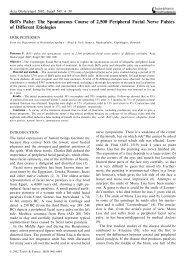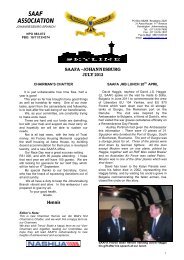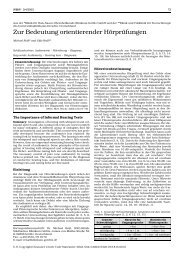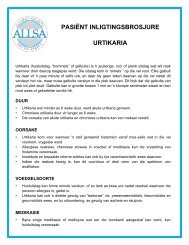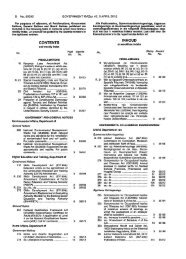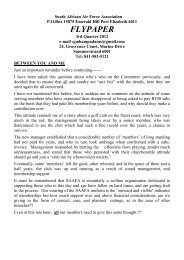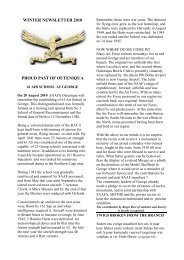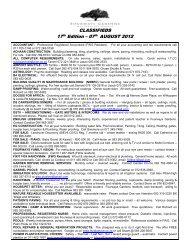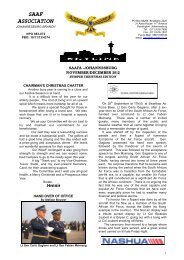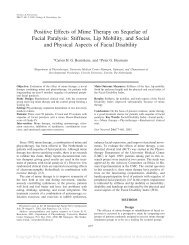The syndromic status of sclerosteosis and van Buchem ... - Admin
The syndromic status of sclerosteosis and van Buchem ... - Admin
The syndromic status of sclerosteosis and van Buchem ... - Admin
Create successful ePaper yourself
Turn your PDF publications into a flip-book with our unique Google optimized e-Paper software.
SCLEROSTEOSIS AND VAN BUCHEM DISEASE 177<br />
Radiographic Features<br />
<strong>The</strong> age-related radiological manifestations<br />
were similar in both groups <strong>of</strong> patients. <strong>The</strong><br />
major changes were present in the skull,<br />
where massive hyperostosis <strong>of</strong> the calvarium<br />
<strong>and</strong> m<strong>and</strong>ible <strong>and</strong> sclerosis <strong>of</strong> the base<br />
invariably occurred. <strong>The</strong> spine showed mild<br />
sclerosis, especially the vertebral pedicles,<br />
while the pelvis was sclerotic, without alteration<br />
<strong>of</strong> the bony contours. Increased radiological<br />
density <strong>and</strong> cortical widening was a<br />
major feature <strong>of</strong> the long bones <strong>of</strong> the limbs.<br />
<strong>The</strong> only real difference between the conditions<br />
was in the h<strong>and</strong>s, where some degree<br />
<strong>of</strong> syndactyly <strong>and</strong> radial deviation <strong>of</strong> terminal<br />
phalanges was seen in the majority <strong>of</strong><br />
<strong>sclerosteosis</strong> patients (Beighton et al. 1976).<br />
By contrast, none <strong>of</strong> the persons with <strong>van</strong><br />
<strong>Buchem</strong> disease had changes <strong>of</strong> this type.<br />
Fig. 2. Van <strong>Buchem</strong> disease: severe crani<strong>of</strong>acial involvement.<br />
This patient has no syndactyly.<br />
Under-modelling <strong>of</strong> the shafts <strong>of</strong> the tubular<br />
bones <strong>of</strong> the digits was present in both<br />
disorders but consistently more pronounced<br />
in the <strong>sclerosteosis</strong> group, even in the individuals<br />
who lacked syndactyly. Irregularity <strong>of</strong><br />
the cortices <strong>of</strong> phalanges was age-related,<br />
<strong>and</strong> was encountered in both sets <strong>of</strong><br />
patients.<br />
Fig. 1. Van <strong>Buchem</strong> disease: moderate crani<strong>of</strong>acial<br />
involvement, no syndactyly.<br />
Discussion<br />
In view <strong>of</strong> the similarity <strong>of</strong> clinical <strong>and</strong><br />
radiographic features, it is tempting to<br />
postulate that <strong>sclerosteosis</strong> <strong>and</strong> <strong>van</strong> <strong>Buchem</strong><br />
disease are the same disorder, <strong>and</strong> that their<br />
separation is an artificial concept based<br />
upon clinical differences which are really<br />
reflections <strong>of</strong> varying expression <strong>of</strong> the same<br />
abnormal genotype.<br />
A patient with <strong>sclerosteosis</strong> Of moderate<br />
severity, with most or all <strong>of</strong> the features




